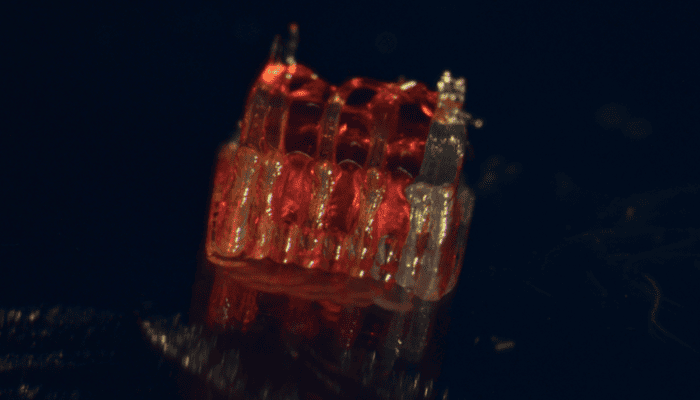3D Printed Scaffolds Offer New Treatment for Spinal Cord Injuries


Photo Credit: University of Minnesota
3D-Printed Scaffolds to Repair the Spinal Cord
The technique is based on the fabrication of a 3D-printed structure designed to host lab-grown tissues, which researchers call an organoid scaffold. This structure contains tiny microscopic channels into which spinal cord–specific neural progenitor cells are introduced. These cells, derived from human adult stem cells, have the ability to multiply and transform into different types of mature nerve cells. “We use the 3D printed channels of the scaffold to direct the growth of the stem cells, which ensures the new nerve fibers grow in the desired way,” explains Guebum Han, former postdoctoral researcher in mechanical engineering at the University of Minnesota and first author of the study. “This method creates a relay system that, when placed in the spinal cord, bypasses the damaged area.“
In their experiment, the researchers implanted these scaffolds in rats with severe spinal cord injuries. The cells turned into neurons and developed nerve fibers in both directions, forming new connections with existing neural circuits. Over time, these new cells fully integrated into the spinal cord tissue, enabling the rats to regain certain motor functions. “Regenerative medicine has brought about a new era in spinal cord injury research,” says Ann Parr, professor of neurosurgery at the University of Minnesota. While this research is still in its early stages, it represents a new source of hope for people affected by such injuries. The team now plans to scale up production of these structures and continue their development for future medical applications.
What do you think of these recent developments from the University of Minnesota? Let us know in a comment below or on our LinkedIn or Facebook pages! Plus, don’t forget to sign up for our free weekly Newsletter to get the latest 3D printing news straight to your inbox. You can also find all our videos on our YouTube channel. Interested in more medical and dental 3D printing news? Visit our dedicated page HERE.
*Cover Photo Credit: Motion Array







